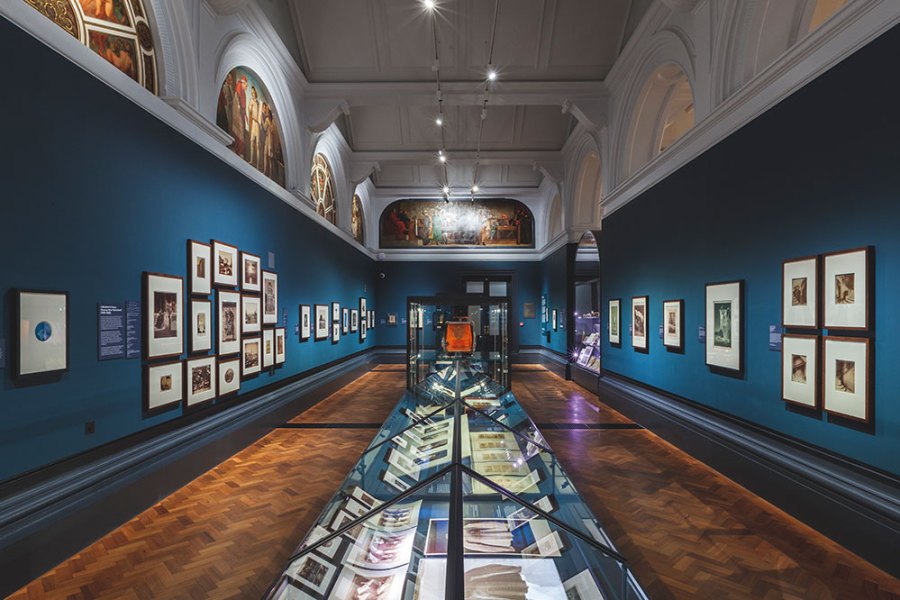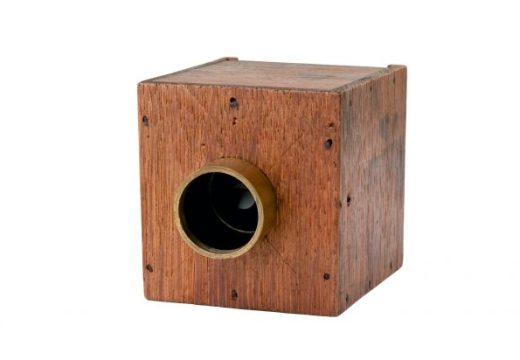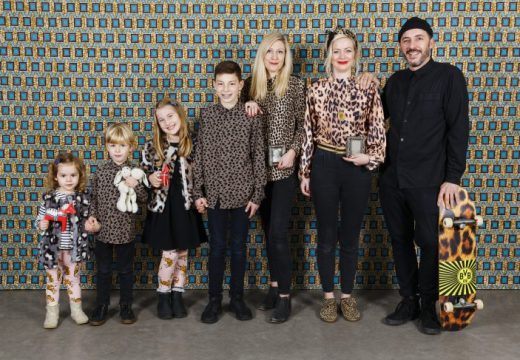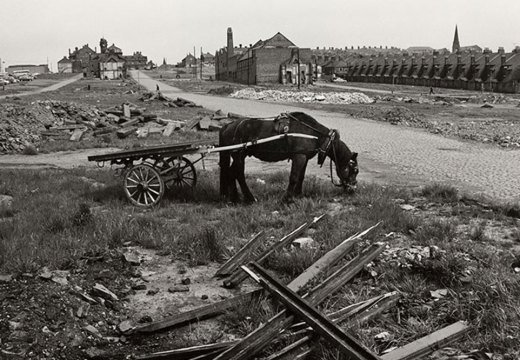From the May 2023 issue of Apollo. Preview and subscribe here.
On 25 May the second and final phase of the V&A’s Photography Centre opens, adding four new galleries to the existing three and creating the largest space in the UK for a permanent photography collection. Meanwhile the Side Gallery in Newcastle closed to the public in April, signalling the demise of a small but influential institution, set up in 1977 to document working-class lives. These stories are at opposite ends of the scale, but both invite us to think about the funding of photography in UK institutions: where it comes from, who gets it, how long it lasts, and what all that means for what is seen in the UK, both today and in the future.
The Photography Centre at the V&A is undeniably a triumph – and it has been ‘made possible’, in the words of the museum, by private support and donations. The Bern Schwartz Family Foundation has backed phase two and a gallery in phase one is named after Bern and Ronny Schwartz. It also includes the Sir Elton John and David Furnish Galleries and the Kusuma Gallery, sponsored by the Kusuma Trust. The latter was set up by husband-and-wife team Anurag Dikshit and Soma Pujari; Dikshit is an entrepreneur and one-time group operations director of the PartyGaming network. PartyGaming was set up by Ruth Monicka Parasol in 1997, and she too is helping fund photography at the V&A.
Parasol and the Parasol Foundation Trust are supporting the Parasol Foundation Women in Photography Project set up in 2021 and making acquisitions such as a series of self-portraits by Tarrah Krajnak. Parasol is also supporting a new curatorial post endowed for 25 years, the Parasol Foundation Curator of Women in Photography, which appointed its first curator, Fiona Rogers, in February 2022.
The V&A’s photography section now has 12 members of staff, says Marta Weiss, senior curator of photography and lead curator of phase two of the centre. ‘The V&A’s photography collection of about 800,000 is certainly one of the largest in the UK (and the world),’ she adds. ‘The V&A also holds over a million more photographs across other departments.’
At the other end of the scale, Side Gallery has said the loss of critical funding plus increasing costs – such as the cost of keeping the lights on – left it with no choice but to close. Set up by Amber Film & Photography Collective, Side was directed by the late Chris Killip from 1977–79; in November 2022, Amber lost its Arts Council National Portfolio Organisation funding, an annual £120,000 award it had received for four years. At that point it received £70,880 transition funding from Arts Council England to help it explore other options, and it recently set up a crowd funder to raise £60,000. This looks likely to succeed, and the hope is that Side will reopen in September 2024. But Amber doesn’t have big private funders, even though its collection includes works by Sirkka-Liisa Konttinen, John Davies, Mark Sealy and Chris Steele-Perkins.
Funding from trusts, foundations, and other donors plays a vital role in enabling the work of the V&A, and that’s true of many other initiatives in UK photography. At Oxford University, the Bodleian Libraries appointed a specialist photography curator for the first time in March 2022, thanks to a £2m gift from the Bern Schwartz Family Foundation. (The gift is large enough to make the post permanent.) Over the last four years Bodleian has also acquired entire archives by photographers, including Daniel Meadows and Bern Schwartz. In 2014 it acquired the William Henry Fox Talbot family archive, a move which encouraged other collectors to donate or deposit Talbot-related items.
The Bodleian is currently exhibiting some of these holdings in ‘Bright Sparks: Photography and the Talbot Archive’, which includes work by Garry Fabian Miller – the first photographer to whom it has awarded a fellowship. The exhibition was curated by Geoffrey Batchen, a photography specialist who has been a professor in the university’s history of art department since 2020, and who also drew on the library’s holdings for ‘A New Power: Photography and Britain 1800–1850’. The Bodleian’s interest in photography has also been attributed to Richard Ovenden, its chief librarian since 2014, and also a photo historian. ‘My interest in photography goes beyond just enthusiasm,’ he says. ‘I absolutely have a commitment to it.’
Meanwhile the National Portrait Gallery (NPG) in London has completed a three-year project of refurbishing and rehanging its 40 galleries and creating a new public entrance. Funds for the £35m project included a grant of £9.4m from the National Lottery Heritage Fund, a £6.5m grant from the Trustees of the Garfield Weston Foundation and donations from supporters such as the Blavatnik Family Foundation. The NPG has a collection of 250,000 photographs and when it reopens in June, there will be an exhibition dedicated to Yevonde (1895–1973), who made her name with society portraits in the 1930s. The museum acquired her archive in 2021 with support from its Portrait Fund, but a three-year partnership with the Chanel Culture Fund helped it research, catalogue and digitise the contents. ‘They are separation negatives made using the Vivex colour process, a 1930s factory process which existed for just ten years,’ explains Clare Freestone, curator in the photographs collection. ‘As digitisation has improved, there have been ways to put these things together. The collection was in private hands until 2021 but we’ve now got 2,000 sets of negatives, opening up understanding of her work.’
Like all institutions, the NPG sometimes refuses collections because of the cost of storing, cataloguing and digitising photographs, even when they’re offered as donations. The NPG acquired the copyright to its Yevonde archive to help make it commercially viable, for example, as well as seeking out the Chanel Culture Fund. The latter ‘tied in really nicely with our and their agenda to bring women’s narratives to the fore in our collection’, Freestone says. ‘We’ve reported to them in terms of the project, and they’ve just been completely supportive. They haven’t directed which negatives we digitise.’
Weiss says something similar of the V&A’s support for women photographers, pointing out that donors don’t directly influence their programme. On the other hand, they fund what they find to be worth funding. ‘The Parasol Foundation Women in Photography Project,’ Weiss explains, ‘came out of a collaborative discussion […] responding to our commitment to photography through the photography phase two developments and the Parasol Foundation Trust’s interests in empowering women across the arts.’
What happens to institutions and projects that don’t attract this kind of interest? There’s more than one cautionary tale. Side Gallery might be one, the National Science and Media Museum (NSMM) in Bradford is another. The collection of the Royal Photography Society was transferred from it to the V&A in 2016 (see the May 2017 issue of Apollo). At the time, the transfer of some 400,000 photographs was described by Simon Cooke, leader of the Conservative group on Bradford council, as ‘an act of cultural rape on my city’. However, in June the NSMM is about to begin a £6m refit creating two new galleries for its still huge collection of photography, film and other forms of media. The galleries open in winter 2024 and budget has come from the National Lottery Heritage Fund, DCMS/Wolfson Museums and Galleries Improvement Fund 2022–24, and Bradford Metropolitan District Council. The Science Museum Group, of which it is part, has underwritten the overall budget, while the museum ‘continues to fundraise’.
The most infamous case is of the Library of Birmingham however, which built up a significant photography collection then, in 2015, had to axe its curators. Daniel Meadows’ archive was in the collection and effectively mothballed until taken by the Bodleian; the archive of photography curator and writer Val Williams is now housed by the Martin Parr Foundation (MPF), set up by the Magnum photographer in 2017. Including Parr’s own archive plus his considerable collection, the MPF Collection now holds about 5,000 prints by other image-makers and about 6,000 photobooks – and that’s after Parr part-gifted, part-sold 12,000 photobooks to the Tate in 2017, an acquisition supported by Maja Hoffmann’s LUMA Foundation.
The MPF Collection is also looking after Chris Killip’s archive, for example, though the licensing is handled by Magnum Photos; curators Ken Grant and Tracy Marshall-Grant drew on this archive for their critically-acclaimed Killip show in 2022 at the Photographers’ Gallery (which has no collection). The MPF also has a free public gallery, and on this note it’s worth highlighting another private initiative opening to the public in 2024: the Peter Marlow Foundation. A space of just over 2,000 square foot in Dungeness, it will house Marlow’s archive, the work of the other image-makers, and books by Magnum photographers.

The orange lehenga, near the Queen Victoria Statue in Birmingham (2019), Maryam Wahid. Centre for British Photography, London; © the artist
Another foundation, but with its origins in private collecting, is the Centre for British Photography (CBP). With three floors of exhibition space, it is backed by a charity founded and so far funded by Claire and James Hyman. Their collection includes more than 3,000 artworks and has focused on British photography for the last 15 years, and the CBP is drawing on it to curate some of its shows. The opening exhibitions in January 2022 included the group show ‘The English at Home’ and a recent acquisition by Natasha Caruana. Two other displays showed new work made with the Hymans’ support and also on show was an archive exhibition created with the Jo Spence Memorial Library at Birkbeck, part of the University of London.
James Hyman says that he’s backing the CBP for two years, during which time he also hopes to attract other funders. ‘Our whole ethos is about collaboration, platforming others, and looking outwards,’ he says. ‘We aim to balance showcasing the collection with staging shows from outside. We really want to partner with colleagues in other public spaces.’ Hyman points out that private funding is nothing new in UK photography, comparing the CBP to the Photographers’ Gallery, set up by Sue Davies in 1971 after she remortgaged her own home. But he also sees the centre as ‘filling gaps’. It’s hard not to wonder if there could be more of a plan for photography in the UK. There are certainly those who argue Britain’s national collection should be better organised – since in fact a national collection currently doesn’t exist, what we have is many separate collections held by state-funded (or partly state-funded) institutions. There is also no official strategy directing what’s collected where; we rely on the various stakeholders to talk to each other.
‘We have nothing hugely formal, but we definitely work together to find the most appropriate home for archives and photographs,’ says Freestone. ‘We obviously talk to our sister institutions to make sure we’re not treading on each others’ toes,’ agrees Ovenden, who adds that ‘having some public funding strategy would be enormously helpful’. Yasufumi Nakamori, senior curator of international art at the Tate, agrees. Nakamori provides strategic directions and curatorial content for the Tate Photography Acquisitions Committee, a circle of supporters which annually raises a sizable amount of funding for the Tate’s purchase of photographs.
The Tate has collected approximately 6,000 photographic works and other large-scale acquisitions are currently underway – including a large donation by Josef Koudelka coupled with the Tate’s purchase of some of his most important works, funded by two acquisitions committees. Nakamori says that the museum is also filling ‘lacunas’ in the histories of photography as represented in the collection, and in 2019 identified three priority areas: global modernities, global feminisms and post-1945 documentary. A similar masterplan does not exist between the various UK institutions.
‘A national, regular forum, where we meet and discuss, would be ideal,’ Nakamori says. ‘Recently I have spoken with Richard Ovenden on a future large-scale acquisition in which both the Tate and the Bodleian will be the beneficiaries, for example, but with other institutions there’s not much discussion in terms of strategising together. We would benefit from more institutional co-ordination.’

Untitled from The Black House , Colin Jones. Centre for British Photography, London. © Colin Jones/TopFoto
Francis Hodgson, professor in the culture of photography at the University of Brighton, agrees. In 2017 he helped found the Photographic Collections Network (PCN), a Subject Specialist Network supported by Arts Council England and the Art Fund which is working on a Collections Mapping Project. It’s no mean feat, yet the PCN has just one employee. ‘We were much more ambitious when we set it up, but we had to go where the money was,’ says Hodgson, who’s still on the steering committee. ‘We had to limit ourselves.’
He suggests the bare minimum is mutually visible catalogues of national holdings, so that researchers can see everything in one place, but adds there should be simple rules to prevent waste: no publicly-funded institution should compete against another at an auction. ‘Inventing a national strategy for what you might think of as a dispersed national collection is very much in the PCN’s language,’ he adds. ‘Somewhere, some attempt to guide our public institutions into a coherent whole seems massively overdue.’
The second phase of the Photography Centre at the Victoria and Albert Museum, London, opens on 25 May.
From the May 2023 issue of Apollo. Preview and subscribe here.
Unlimited access from just $16 every 3 months
Subscribe to get unlimited and exclusive access to the top art stories, interviews and exhibition reviews.














![Masterpiece [Re]discovery 2022. Photo: Ben Fisher Photography, courtesy of Masterpiece London](http://www.apollo-magazine.com/wp-content/uploads/2022/07/MPL2022_4263.jpg)
It’s time for the government of London to return to its rightful home